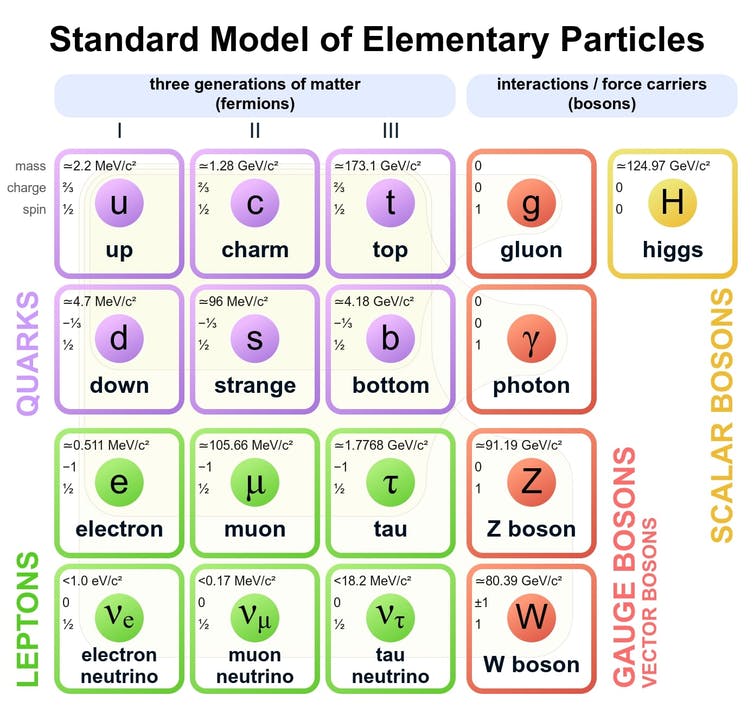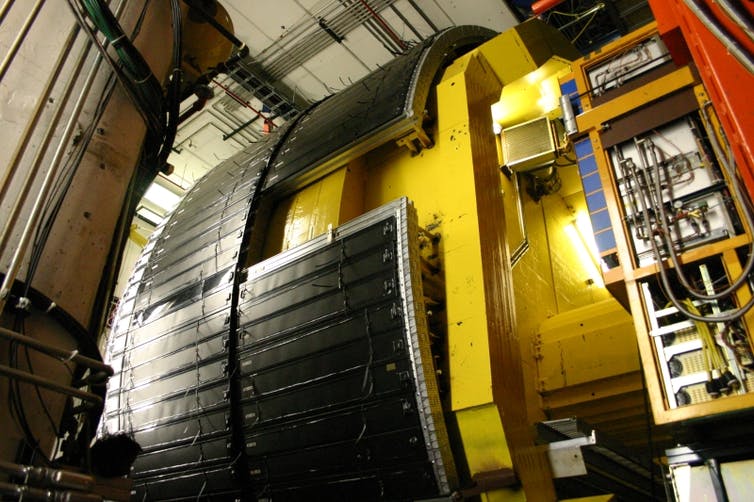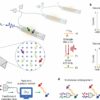“You can do it quickly, you can do it cheaply, or you can do it right. We did it right.” These were some of the opening remarks from David Toback, leader of the Collider Detector at Fermilab, as he announced the results of a decadelong experiment to measure the mass of a particle called the W boson.
I am a high energy particle physicist, and I am part of the team of hundreds of scientists that built and ran the Collider Detector at Fermilab in Illinois – known as CDF.
After trillions of collisions and years of data collection and number crunching, the CDF team found that the W boson has slightly more mass than expected. Though the discrepancy is tiny, the results, described in a paper published in Science on April 7, 2022, have electrified the particle physics world. If the measurement is correct, it is yet another strong signal that there are missing pieces to the physics puzzle of how the universe works.

The Standard Model of particle physics describes the particles that make up the mass and forces of the universe.
MissMJ/WikimediaCommons
A particle that carries the weak force
The Standard Model of particle physics is science’s current best framework for the basic laws of the universe and describes three basic forces: the electromagnetic force, the weak force and the strong force.
The strong force holds atomic nuclei together. But some nuclei are unstable and undergo radioactive decay, slowly releasing energy by emitting particles. This process is driven by the weak force, and since the early 1900s, physicists sought an explanation for why and how atoms decay.
According to the Standard Model, forces are transmitted by particles. In the 1960s, a series of theoretical and experimental breakthroughs proposed that the weak force is transmitted by particles called W and Z bosons. It also postulated that a third particle, the Higgs boson, is what gives all other particles – including W and Z bosons – mass.
Since the advent of the Standard Model in the 1960s, scientists have been working their way down the list of predicted yet undiscovered particles and measuring their properties. In 1983, two experiments at CERN in Geneva, Switzerland, captured the first evidence of the existence of the W boson. It appeared to have the mass of roughly a medium-sized atom such as bromine.
By the 2000s, there was just one piece missing to complete the Standard Model and tie everything together: the Higgs boson. I helped search for the Higgs boson on three successive experiments, and at last we discovered it in 2012 at the Large Hadron Collider at CERN.
The Standard Model was complete, and all the measurements we made hung together beautifully with the predictions.

The Collider Detector at Fermilab collected data from trillions of collisions that produced millions of W bosons.
Bodhita/WikimediaCommons, CC BY-SA
Measuring W bosons
Testing the Standard Model…



